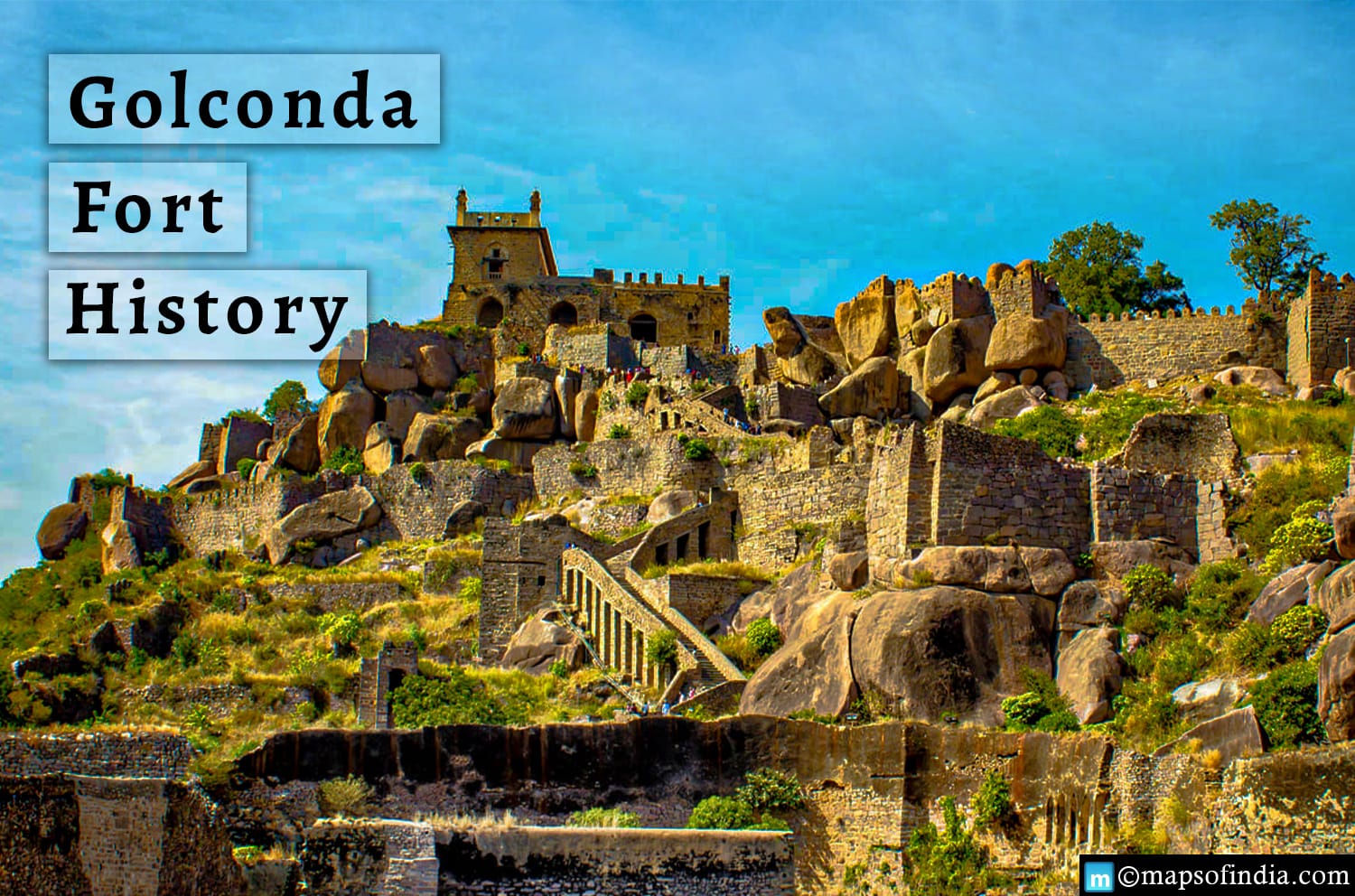
Know about the History of the Golconda Fort History
The fort was originally known as Mankal and it was built on a hilltop in 1143. The Golconda Fort Hyderabad Telangana was originally a mud fort under the regime of Rajah of Warangal. The Golconda fort history depicts that it was fortified between 14th and 17th centuries by the Qutub Shahi dynasty and Bahmani Sultans.

The Golconda Fort, Telangana, India Originally known as Mankal, Golkonda Fort was first built by
Golconda Fort. Around 11 km from Hyderabad, the impressive 16th century Golconda Fort is one of the most famous forts in India. The capital of the erstwhile Golconda kingdom, the fort was the centre of the Golconda stronghold in the region and was thus built as an impregnable structure. Its former glory and majesty can still be seen in the.
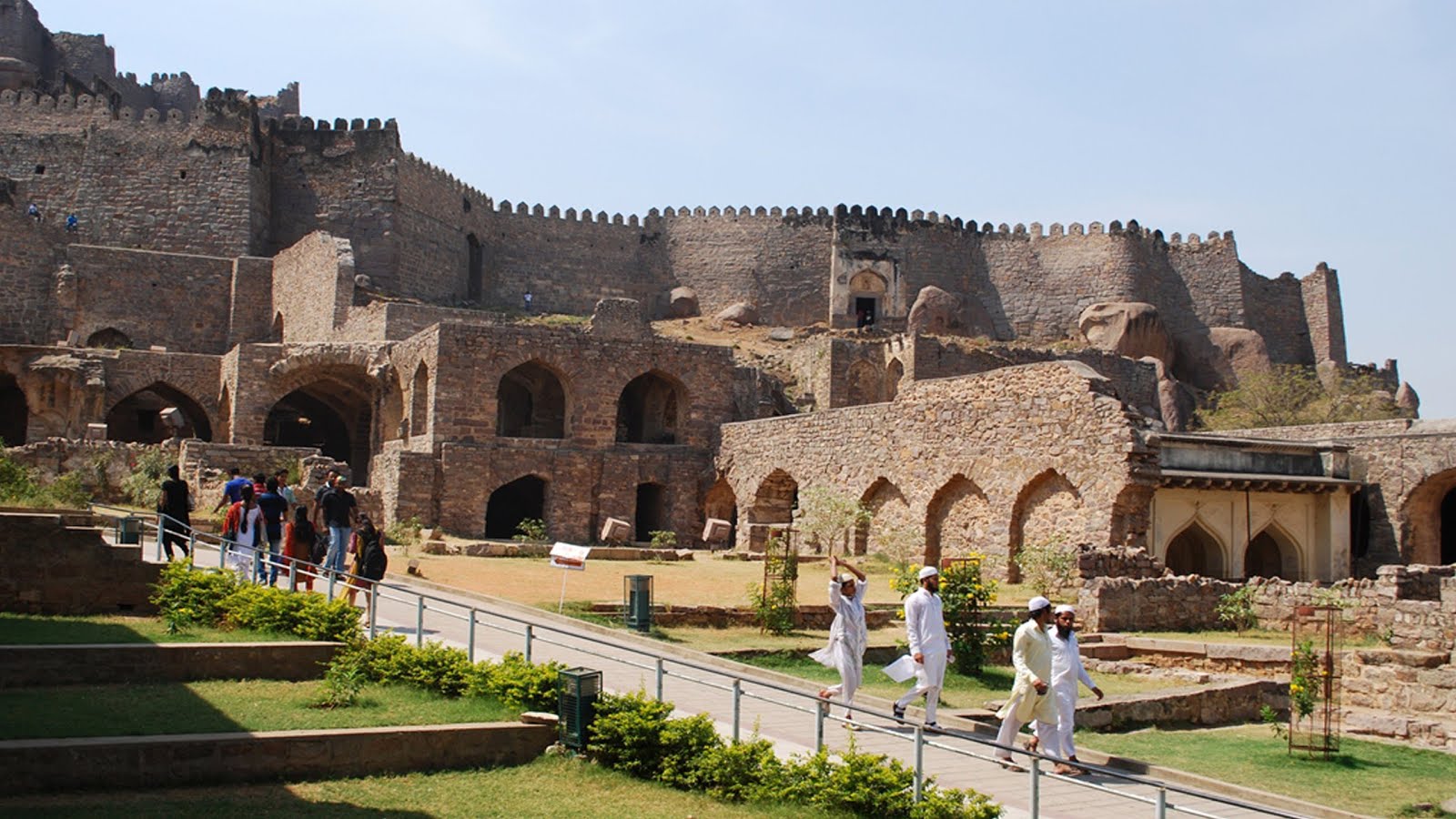
Golconda Fort, Telangana, India Heroes Of Adventure
Golconda is a fortified citadel and ruined city located in the western outskirts of Hyderabad, Telangana, India. The fort was originally built by Kakatiya ruler Pratāparudra in the 11th century out of mud walls. It was ceded to the Bahmani Kings by Deo Rai, Rajah of Warangal during the reign of Sultan Muhammad Shah of the Bahmani Sultanate.

Golconda Fort A Travel in Time Trickles of Tales
Golconda: a Testimony of the Chronicles of South India. According to legend, a shepherd boy found a sacred Indian idol, and when the ruler of the Kakatiya dynasty heard about the discovery, he built a mud fort commemorating the occasion. It was called Golconda, Telugu for "shepherd's hill". In 1518, the Qutb Shahi kings took control of.

Telangana, All You Need To Know, Visit Golconda Fort Youth Ki Awaaz
Golconda, historic fortress and ruined city lying 5 miles (8 km) west of Hyderabad in western Telangana state, southern India. From 1518 to 1591 it was the capital of the Quṭb Shāhī kingdom (1518-1687), one of five Muslim sultanates of the Deccan.. The 16th-century Golconda Fort, Telangana, India, built during the Quṭb Shāhī.

Golconda Fort (Built in 1600s). Andhra Pradesh, India. South india tour packages, South india
Delving into the rich and often bloody history of Golconda Fort Royal abodes from a bygone era, once home to treasures, now attract only clapping day-trippers. November 05, 2016 04:35 pm | Updated.

Golconda Fort and Hussain Sagar Lake in Hyderabad aalmaramspot
Golconda is a fortified citadel and ruined city located in the western outskirts of Hyderabad, Telangana, India. [1] [2] The fort was originally built by Kakatiya ruler Pratāparudra in the 11th century out of mud walls. [3] It was ceded to the Bahmani Kings by Deo Rai, Rajah of Warangal during the reign of Sultan Muhammad Shah (1358-1375 A.D.
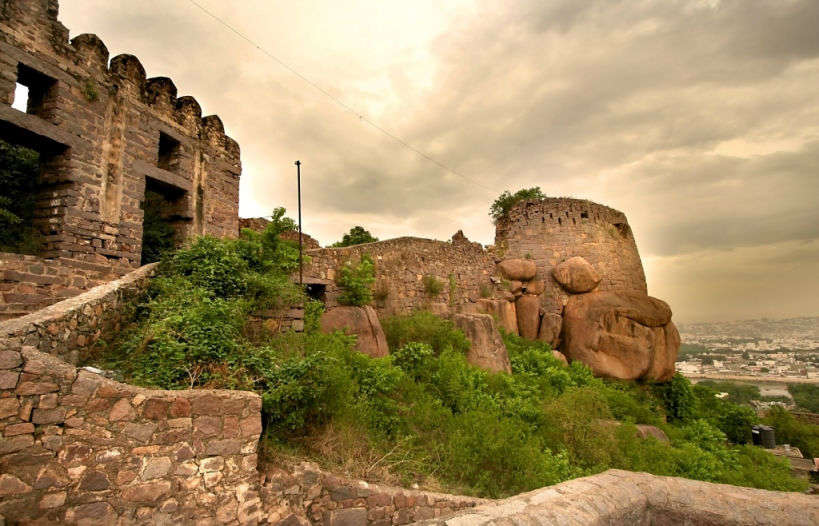
Golconda Fort Hyderabad Get the Detail of Golconda Fort on Times of India Travel
Golconda Fort. Golconda Fort is located in the western part of Hyderabad city and is about 9 km from the Hussain Sagar Lake. The outer fort occupies an area of three square kilometers, which is 4.8 kilometers in length. It was originally known as Mankal, and built on a hilltop in the year 1143.
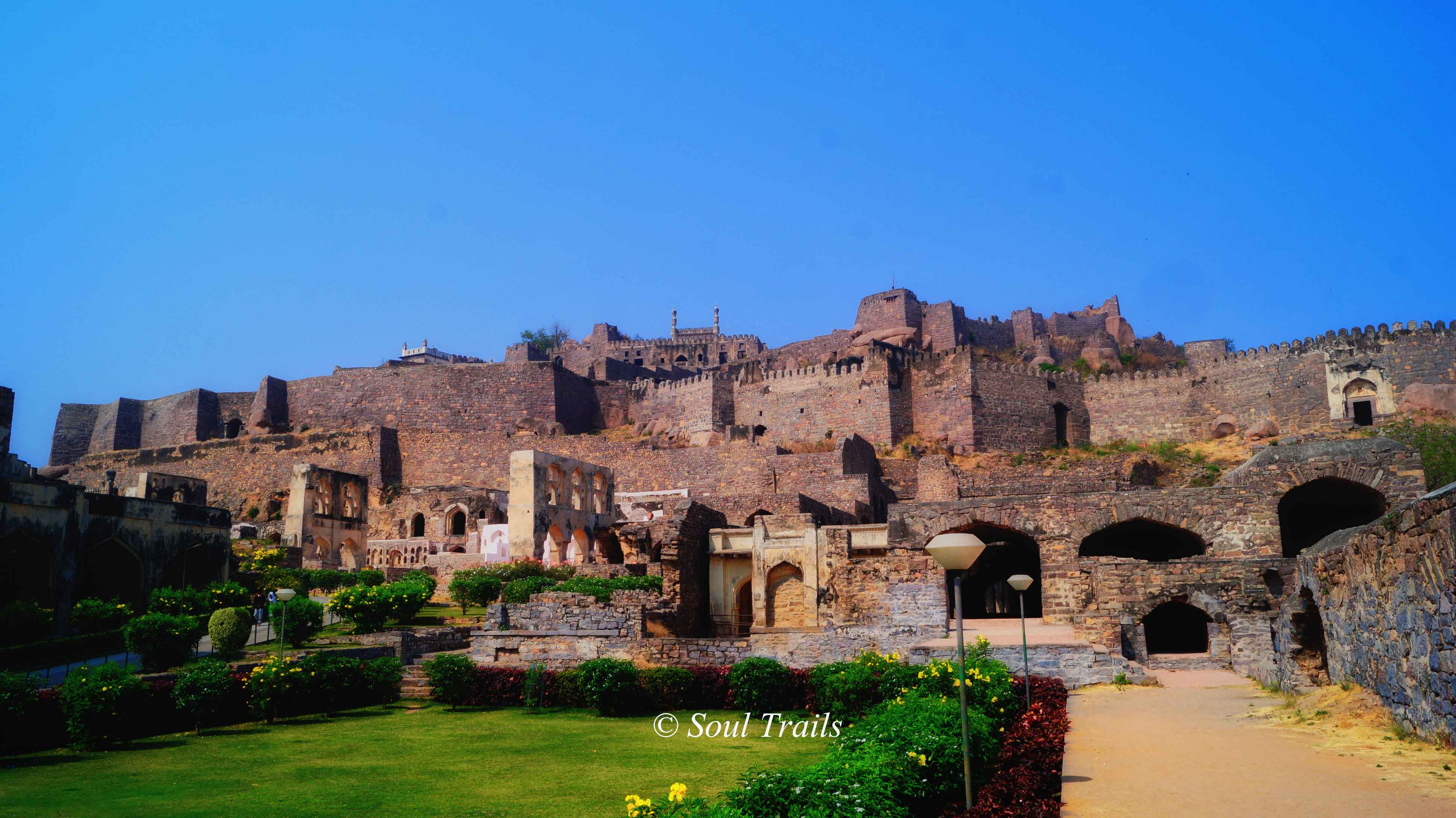
Golconda Fort A Tale of Diamonds, Treason & Architectural Marvels Soul Trails
Golconda Fort is a grand structure built on a hill of altitude 400 feet with a circumference of 7 km displaying the beautiful fusion of Hindu-Islamic style of architecture. Its wall comprises of 8 gates and 87 bastions each one reaching the height of 50-60 feet. There are three powerful consecutive fortification walls each within the other.

Golkonda Fort Plugon
This was the initial structure of the fort before the grand edifice came into existence. The Golconda fort is believed to have been built by the Kakatiyas in the 13th century CE. The structure was reinforced by Pratapa Rudra (r. 1289-1323), one of the most prominent Kakatiya rulers and the last king of the dynasty.
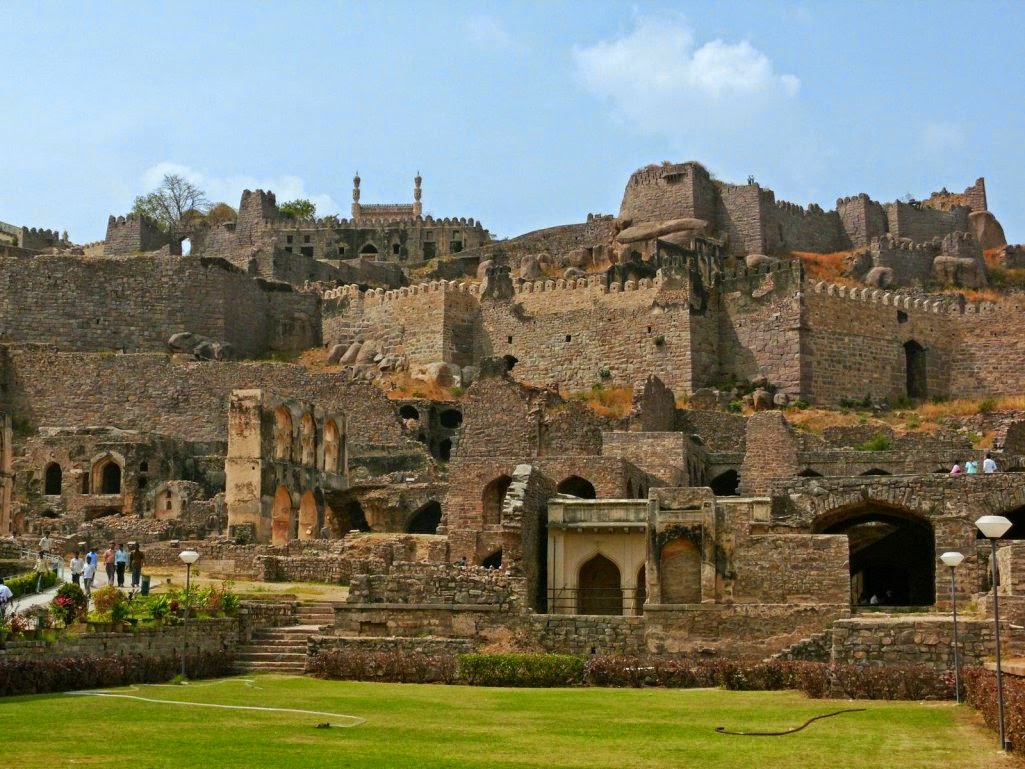
Golkonda Fort
Nikitha Karnam. -. September 24, 2020. Among the ruins of Golconda Fort lies a history of half a millennium. It remains a thing of beauty despite the destruction it has gone through. It is 3 miles in circumference, and the granite hill that it is built on is 390 feet high. The glorious Golkonda fort in Hyderabad has cannons, gateways, majestic.

The Golconda Fort, west of Hyderabad, was first built around 945. The... News Photo Getty Images
Golconda fort was previously called Mankal and was built by Rajah of Warangal in 1143. The fort was built of mud on a hilltop. Golconda Fort under Kakatiya and Musunuri Dynasties. Kakatiya dynasty built the Golconda fort to defend the western part of their kingdom. The fort was built on top of a granite hill.
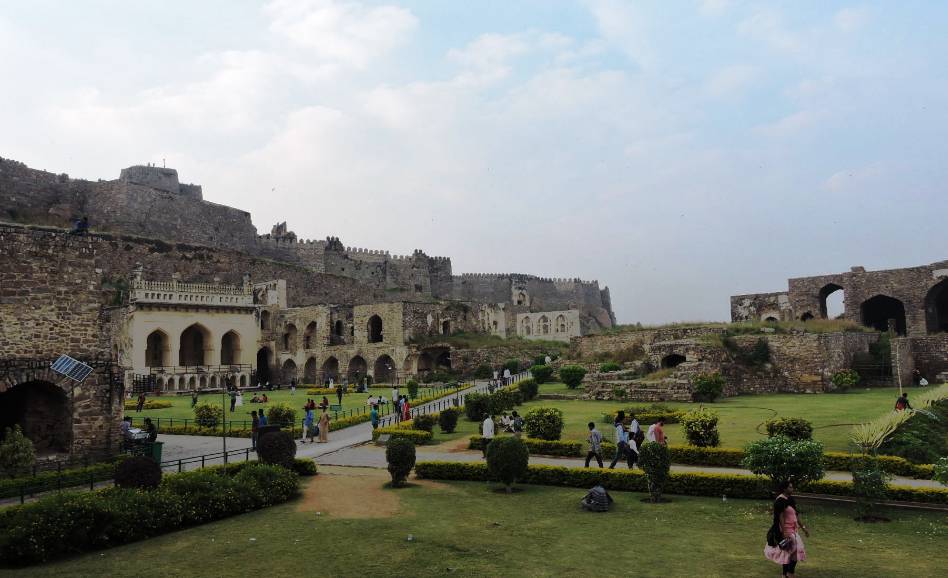
Golconda Fort Hyderabad, Timings, History, Entry Fee, Images
The history of Golconda Fort is scarred by sieges and warfare. Each battle fought at its gates has left an indelible mark. In the 17th century, the Mughal emperor Aurangzeb laid siege to Golconda Fort, desiring its riches and strategic location. The siege was long and grueling, with the fort's defenses holding strong for months.

The Golconda Fort, Telangana, India Originally known as Mankal, Golkonda Fort was first built by
Religion. The Qutb Shahi dynasty, like many Deccan Islamic dynasties, was a Shia Islam dynasty with roots in Persia (modern Iran). Initially they were very strict and they persecuted the Hindus who constituted the vast majority of the population. Open practice of Hindu festivals was forbidden in Golconda Sultanate.
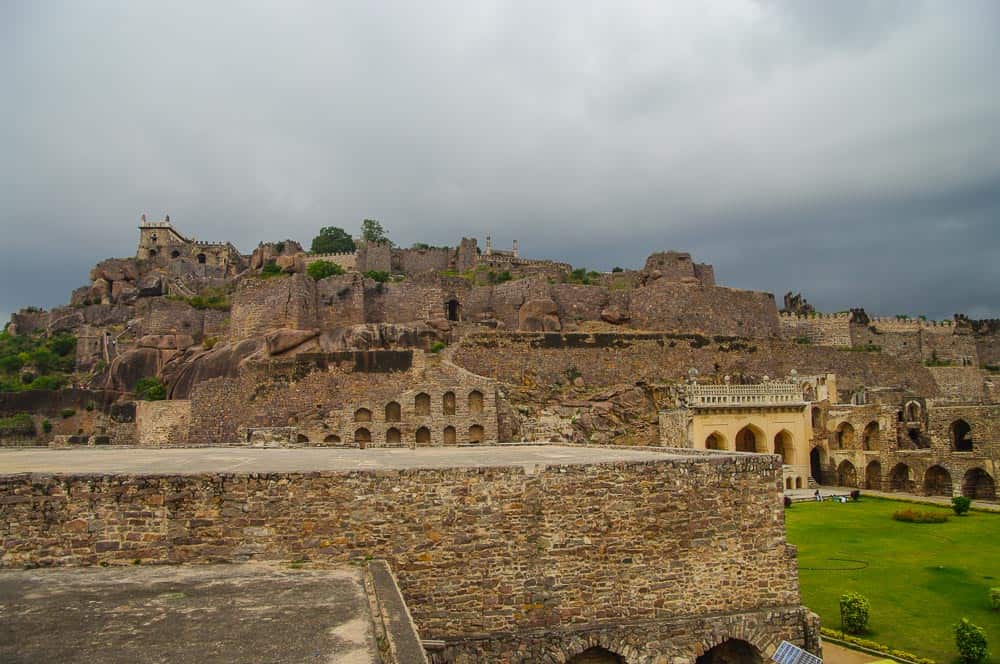
Travel Guide To Golconda Fort A Off The Beaten Path Fort In India Unusual Traveler
2 min read. Located in the western part of Hyderabad, the Golconda Fort was originally known as Mankal and was built in 1143. It started as a mud fort under the rule of the Rajah of Warangal and was later fortified by the Bahmani Sultans and the Qutub Shahi dynasty between the 14th and 17th centuries. The inner fort contains the remains of.

Golconda Fort History, Facts, Wiki & More.
The history of Golkonda Fort dates back to the 12th century when it was first built as a mud fort during the reign of the Kakatiya dynasty. However, it was during the Qutb Shahi dynasty in the 16th century that Golkonda Fort truly flourished and became a formidable stronghold. The Qutb Shahi rulers transformed the fort into a fortified citadel.